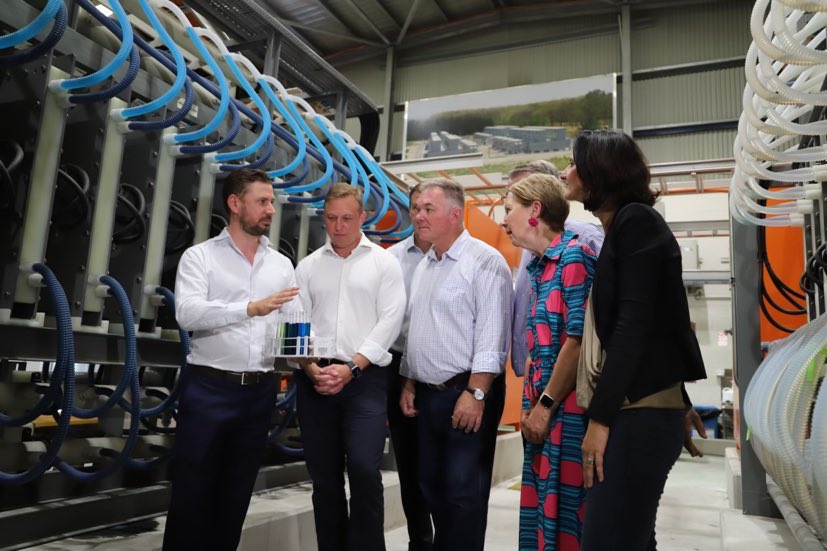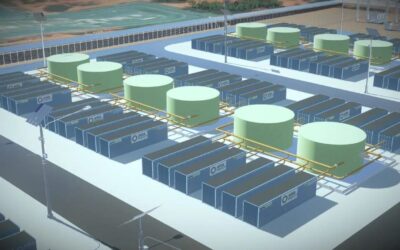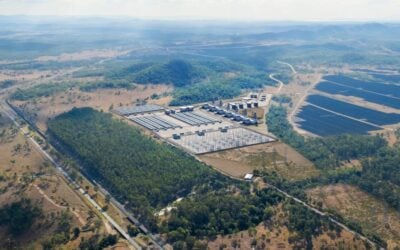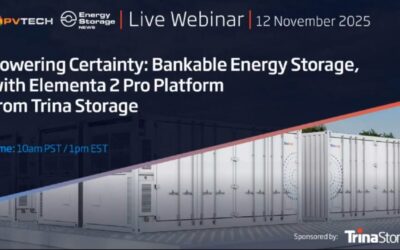
Queensland has published its official battery strategy as part of the Australian state’s major Energy and Jobs Plan and policies to invigorate its industries.
The “multi-technology” strategy, originally planned for launch in mid-2023, is aimed at boosting Queensland’s involvement in developing, manufacturing, and deploying energy storage tech. It sets out a plan for enabling AU$570 million (US$375.29 million) of investment into the sector in the next five years.
The Australian federal government will put AU$100 million towards that sum. The investment will be split across three key ‘themes’: ‘Innovate and commercialise’ (AU$275 million), ‘invest, integrate and grow’ (AU$92.2 million) and AU$202.5 million to ‘position and promote’.
The 36-page plan was published yesterday and can be read in full here (PDF).
Try Premium for just $1
- Full premium access for the first month at only $1
- Converts to an annual rate after 30 days unless cancelled
- Cancel anytime during the trial period
Premium Benefits
- Expert industry analysis and interviews
- Digital access to PV Tech Power journal
- Exclusive event discounts
Or get the full Premium subscription right away
Or continue reading this article for free
The backstory is that the then premier, Annastacia Palaszczuk unveiled Queensland’s Energy and Jobs Plan in September 2022 in tandem with a commitment to the state reaching 70% renewable energy by 2032 and 75% by 2035.
The entire plan would require investment of AU$62 billion, but perhaps more importantly, the premier – since replaced by Labor Party colleague Steven Miles – also oversaw research work to identify potential competitive advantages Queensland could have in the battery and energy storage value chain.
Reports produced on behalf of the government found advantages in the value chain for lithium-ion (Li-ion) batteries in terms of raw materials, but it also found that Queensland’s reserves of vanadium could be leveraged and that this was the area where the state stood out against potential domestic and international rivals.
The paper, written by consultancy Accenture, said the battery industry ecosystem could drive AU$1.3 billion investment and create 9,000 jobs by 2032.
Japanese corporates in Townsville factory collaboration
The state has already committed to supporting a vanadium redox flow battery (VRB) electrolyte factory, under construction by locally headquartered manufacturer Vecco Group.
Yesterday, it was announced that plans to build complete VRB systems locally are also afoot with two major Japanese corporations signing a non-exclusive agreement with Vecco to develop a factory in the city of Townsville in North Queensland.
Premier Steven Miles attended a Vecco facility as Idemitsu Australia and Sumitomo Electric Industries signed their collaboration agreement to build a complete manufacturing supply chain from raw materials to finished products.
Vecco has secured a site for its factory already. Idemitsu, an energy company best known in the oil and gas sector, will market and deploy the batteries, while Sumitomo Electric, a diversified company which has been one of the world’s predominant vanadium flow battery makers to date, will make them with Vecco, the Queenland company’s managing director Tom Northcott said.
Northcott noted that according to some analyst’s estimations, there are currently more than 7.4GWh of VRB projects in construction or that have been announced in the last 12 months.
“We are taking vanadium from Julia Creek – one of the world’s biggest and best vanadium resources – and turning it into batteries here creating more local jobs,” state premier Steven Miles said.
“We know those batteries will provide deep storage into our own grid, but today we are taking it a step further. This means manufacturing the vanadium flow batteries needed in Australia to transition to renewable energy and supplying vanadium electrolyte to the world.”
There is also a factory in development for another flow battery technology in Queensland, using proprietary iron electrolyte flow battery technology licensed from US maker ESS Inc, while Redflow, a zinc-bromine hybrid flow battery company, is headquartered in Queensland.
Other companies are also pushing to establish flow battery manufacturing value chains in Australia, including Australian Vanadium Limited (AVL), which is pursuing a vertical integration model. AVL completed construction of its own electrolyte production plant in Western Australia last December ahead of its official opening in January.
Vanadium flow battery companies are targeting the extraction of resources from Western Australia as well as Queensland, with Australia holding a significant percentage of the world’s primary vanadium resources, which are largely untapped. The manufacture of and access to electrolyte, meanwhile, will be a key determinant of success in the industry, AVL marketing manager Samantha McGann wrote in a guest blog post for this site last year.
The VRB was also invented in Australia at the University of New South Wales (UNSW) off the back of initial work by US space agency NASA.
Energy-Storage.news’ publisher Solar Media will host the 1st Energy Storage Summit Australia, on 21-22 May 2024 in Sydney, NSW. Featuring a packed programme of panels, presentations and fireside chats from industry leaders focusing on accelerating the market for energy storage across the country. For more information, go to the website.





